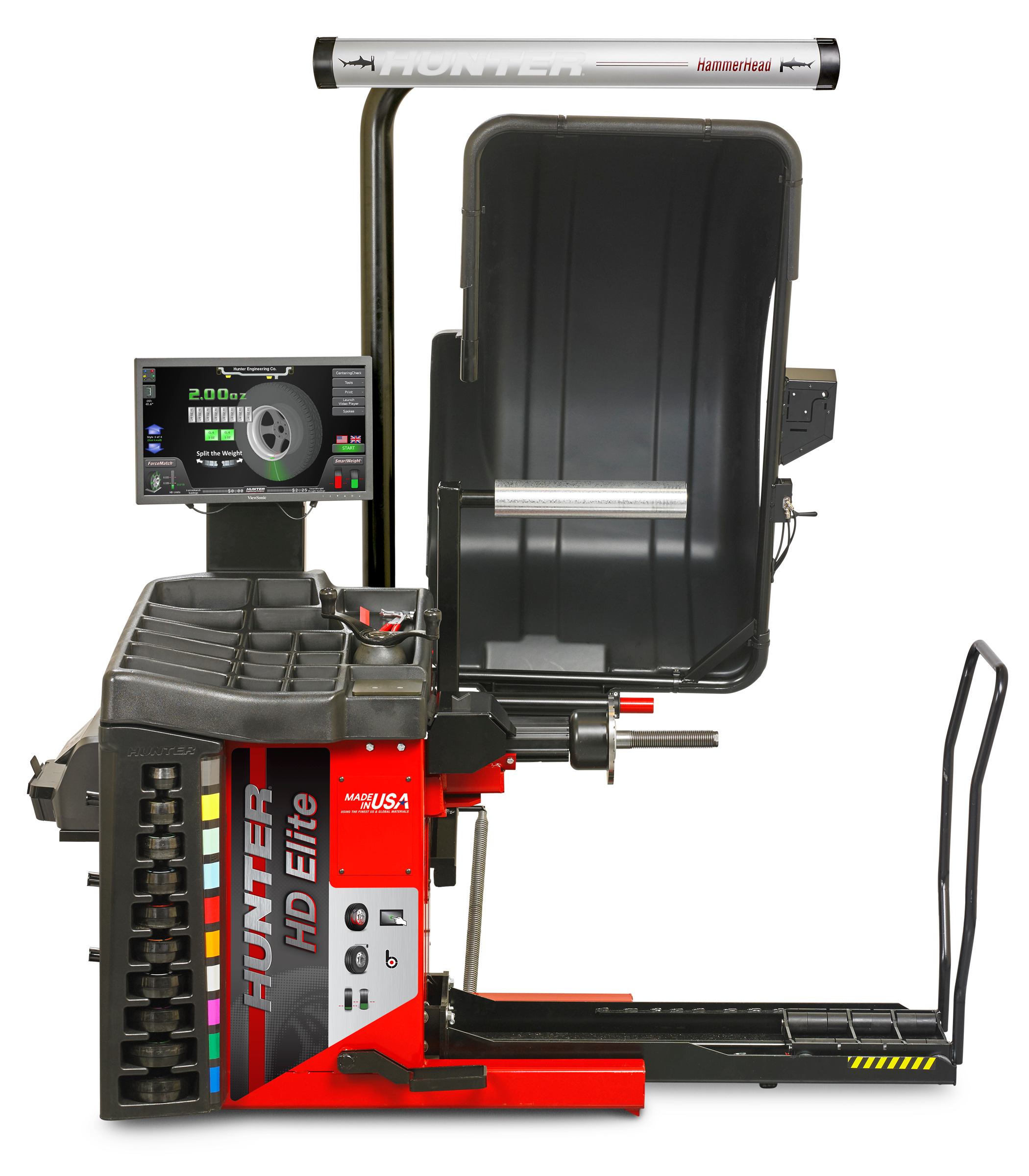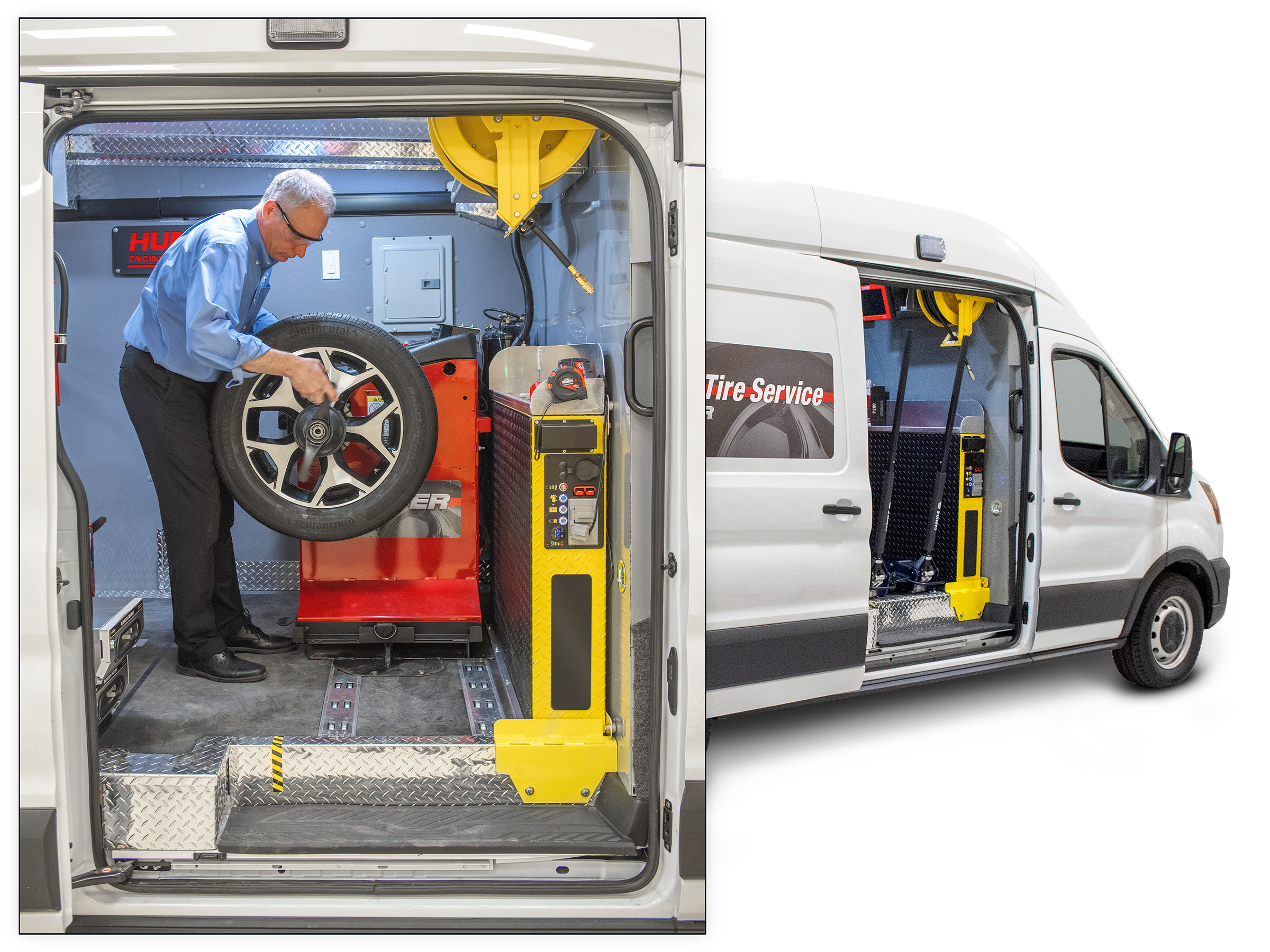Hunter Industry Insights
Finding the best wheel balancer for your shop
Read further for important considerations when researching wheel balancers and why Hunter Equipment offers the best wheel balancer for your shop. When you are ready to learn more or want to see Hunter equipment in action, you can contact your local Hunter team, who can provide detailed product information, on-site demos, and pricing information.

Quick stats
Wheel balancers
60% of balance-related issues are caused by wheels improperly centered on balancers.
Approximately 30% of wheel/tire assemblies are at risk of causing vehicle vibrations despite being perfectly balanced
Modern vehicles are approximately 4x more sensitive to static forces than couple or dynamic forces
Wheel Balancers
Top 9 things to consider
What defines a good wheel balancer?
User Interface
Is the system intuitive? An intuitive, easy-to-use interface will increase employee effectiveness.
Centering Accuracy
Centering errors are a major cause of customer comebacks. Make sure the wheel balancer you are considering can easily verify a wheel is centered properly.
Vibration Diagnostics
A properly balanced wheel doesn't always roll smoothly. A machine that can take the assembly for a test drive will ensure satisfied customers.
Instructional Videos
A wheel balancer with included training assistance increases the value of your investment. On-board training videos simplify training and improves overall balance.
TMPS Database
TPMS systems are a fact of life when dealing with modern wheels and tires. A resident lookup database will make technicians faster and more efficient.
Shaft Durability
Make sure the wheel balancer you are considering has a durable balancer shaft that is designed to last for the life of the machine.
Tire Pull Diagnostics
A wheel balancer that can measure this allows technicians to find a pull problem before your customers do.
Reputation
A wheel balancer should last a very long time, be sure to choose one that is built to last. Hunter Engineering has local business consultants that can visit your shop and help you choose the right wheel balancer to fit your needs.
Service Support
Make sure the manufacturer supports their products in the field with a team of reliable service representatives. Onboard training videos simplify training and help minimize the effects of tech turnover.
Rolling Smooth
Hunter University
The basics and theory of Road Force balancing and vibration diagnostics. Learn more
Shop type
How do different shops benefit from wheel balancers?
General repair shops
General repair shops are often lower-volume balancing shops. General repair shops should invest in easy-to-use wheel balancers that balance wheels right the first go around.
Tire shops
With the frequency of tire services, tire shops need wheel balancers that are fast and can withstand a high volume of balances.
Automotive dealerships
Dealerships deal with new vehicles and warranty repair and therefore require the highest level of diagnostics to ensure customer satisfaction.
Collision
Collision shops often see assemblies with bent or damaged wheels, which makes running diagnostics an important feature.
Heavy-duty shops
Heavy-duty shops have customers who are concerned with tire life and vibrations. Diagnostics are needed to ensure round tires that last a long time.
Government & education
Government and education facilities need to have the state of the art equipment to ensure the latest methods are being applied and taught.
Features of wheel balancers
What are the most important wheel balancer features?
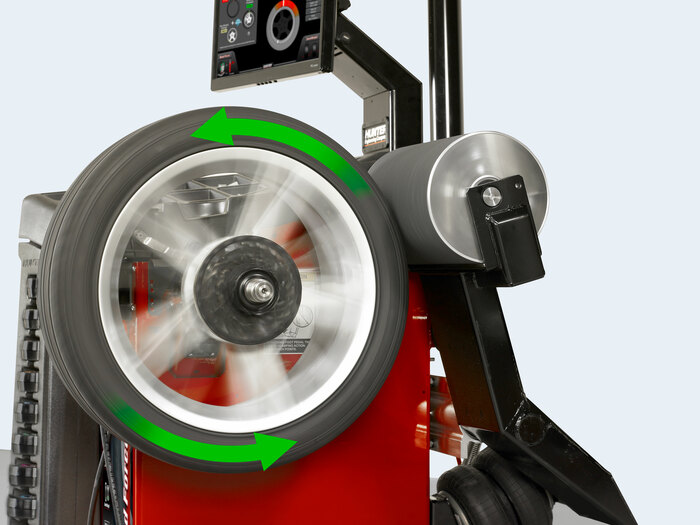
Balancing technology
Road Force technology uses a roller to press against the tire and take it for a road test. This finds all of the non-balance related sources of vibration to give vehicles the best possible ride.

User Interface
An intuitive interface helps a technician get the job done right the first time.

Wheel measurement
The best balancing technologies enter wheel dimensions automatically which provide the fastest and most accurate balance results.
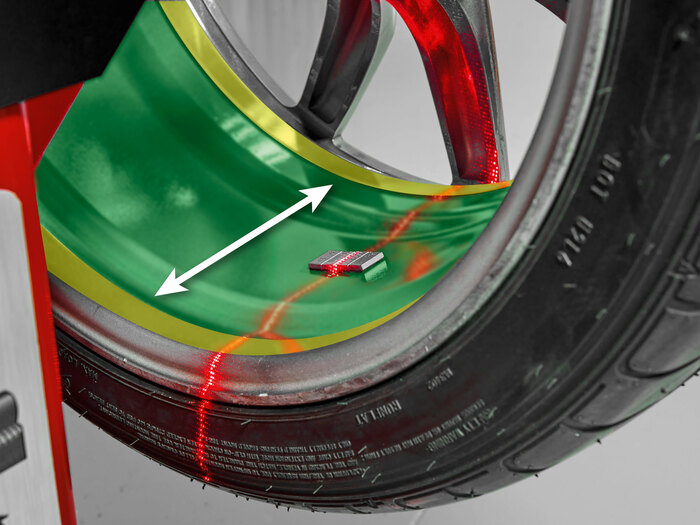
Weight Placement Indicators
Overhead and in-wheel laser indicators ensure the most accurate wheel weight placement and therefore the best balance.

Centering
Poor centering is the most common cause of wheel balancing issues.
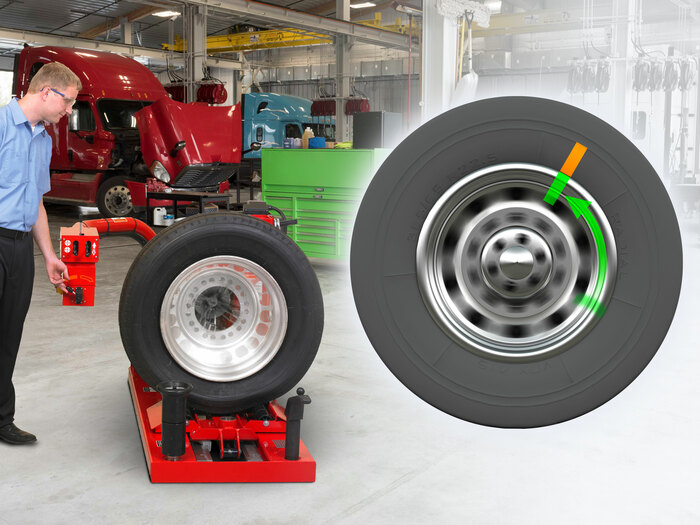
Match mounting
Balance alone cannot ensure that a wheel assembly rolls smoothly. Measuring the tire with a roller test drives the assembly and ensures the best possible ride.

Mobile service
Increase tire sales and fix wheel assembly vibration issues, all while providing the convenience of on-site customer service.
Display types
Types of wheel balancer display
Touch screen
Fastest and most intuitive interface for balancers allows technicians get up to speed quickly.
Monitor
Lowest cost and most durable display option for wheel balancers.
Weight-class
Passenger versus HD wheel balancers
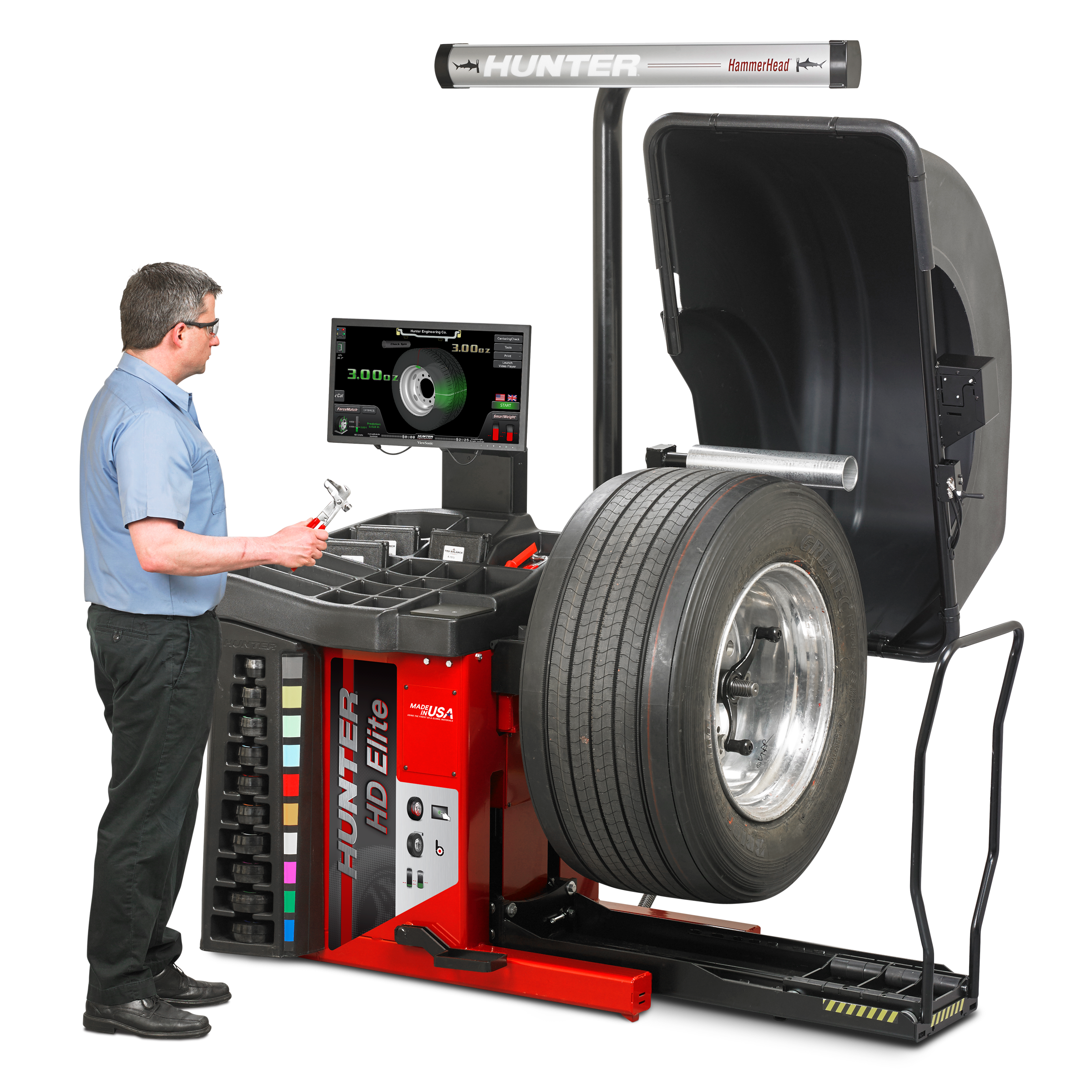
Heavy Duty
Heavy Duty balancers are optimized for heavy and large wheel assemblies. This machines are designed to balance these large assemblies all day long.
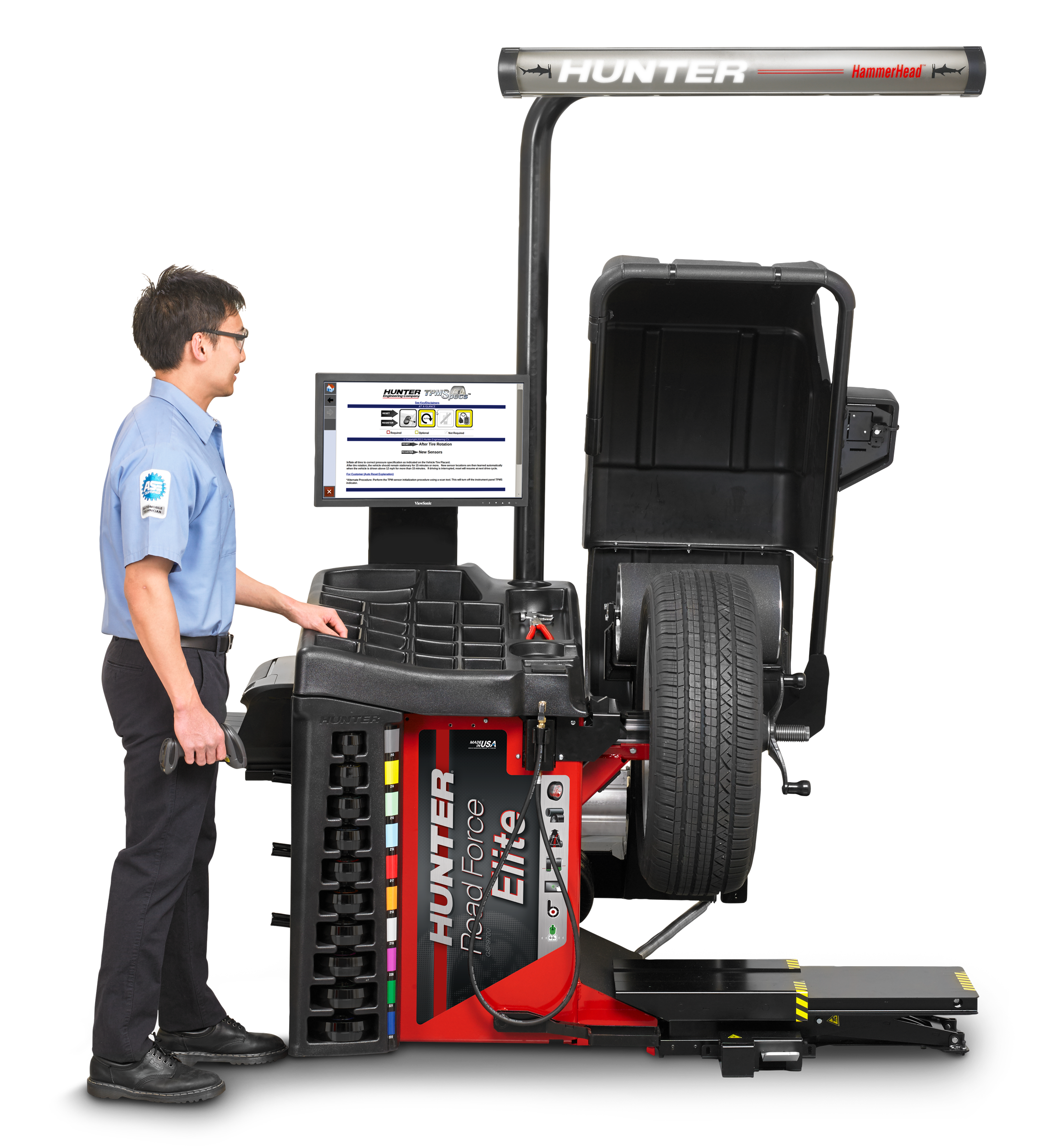
Passenger
These machines are best at high volume balancing and are highly accurate to ensure smooth rides on these vehicles.
Mobile
These machines are compact and are designed to fit into vans and trucks to allow a wide variety of wheels to be balanced on the move
Clamping options
Options for wheel balancing clamping

Standard threaded shaft
The ultimate in simplicity and durability ensures that the balancer is always ready to work.

Speed clamp
The fastest and most consistent way to attach a wheel assembly to a balancer.
Browse wheel balancers
Fastest and most efficient balancers
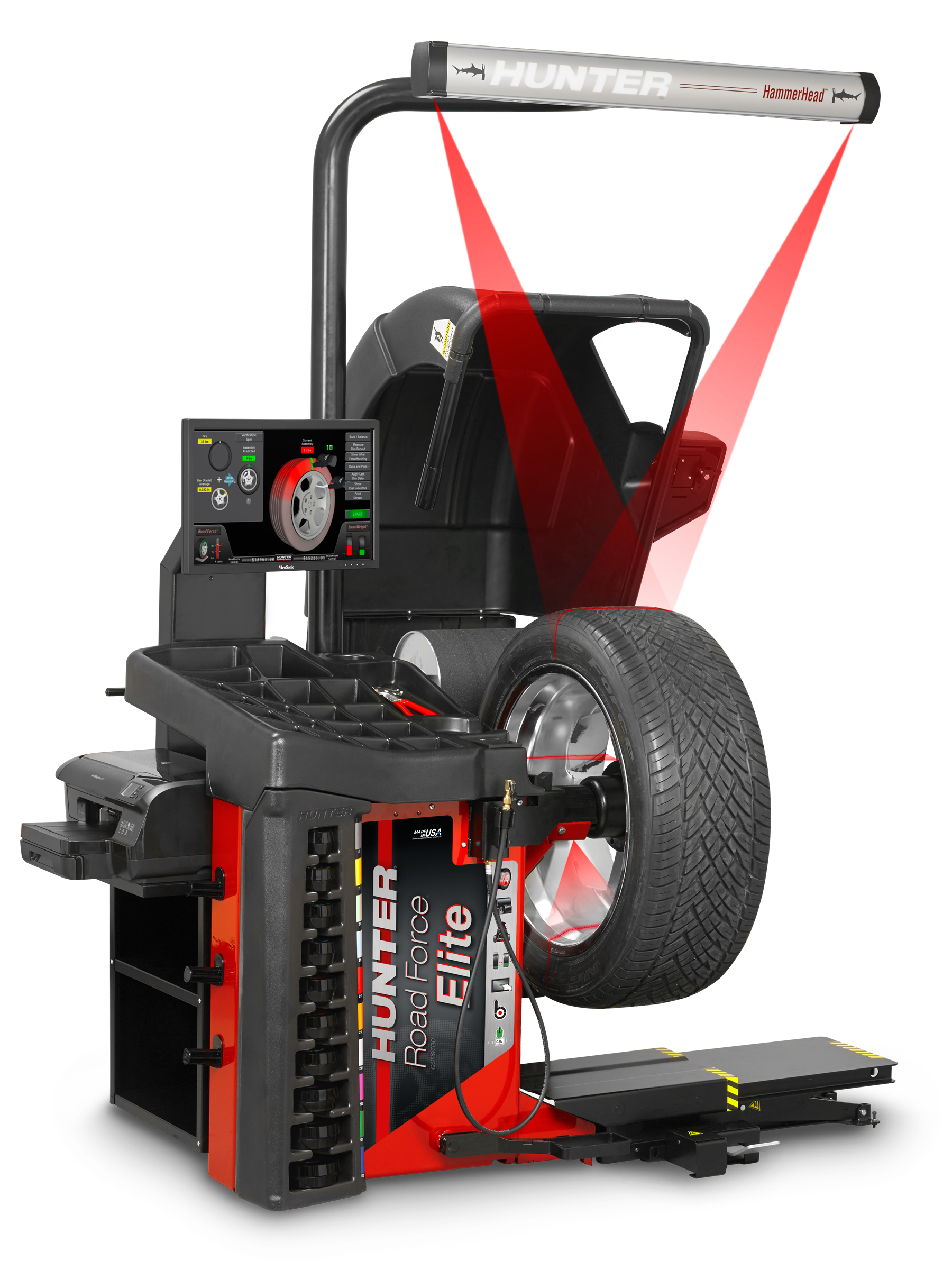
Featured wheel balancer
Road Force Elite®
Solve vibration problems and provide the "new car ride" using the diagnostic load roller
Learn more
Made in the USA

3 year warranty
Local sales team
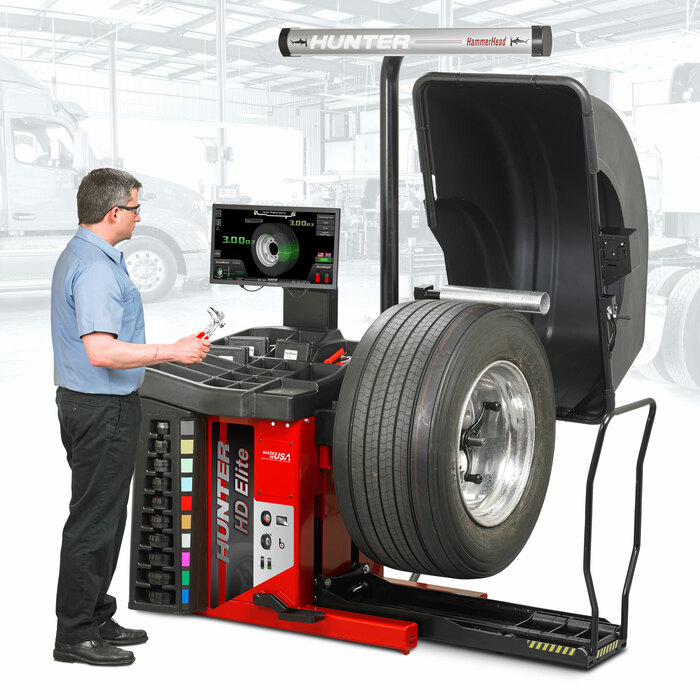
Heavy Duty Elite®
Heavy-duty diagnostic wheel balancer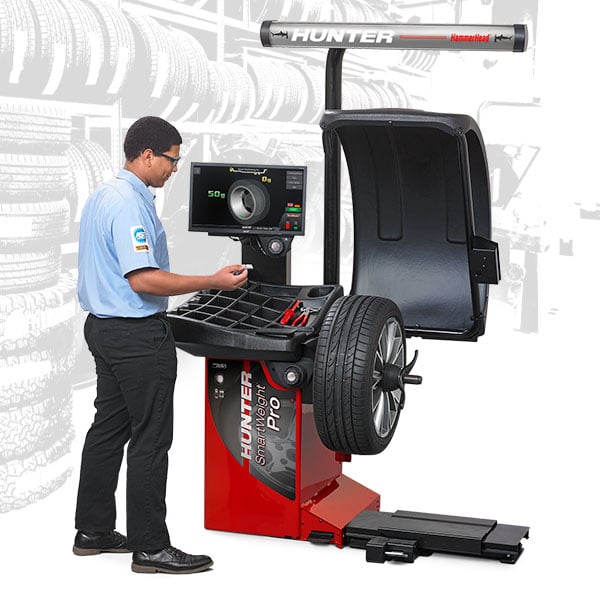
SmartWeight® Balancers
Patented SmartWeight® Technology

Wondering about your return on investment?
Speed up balancing with centering checks and SmartWeight®, and avoid comebacks using diagnostic Road Force measurements.
FAQ
